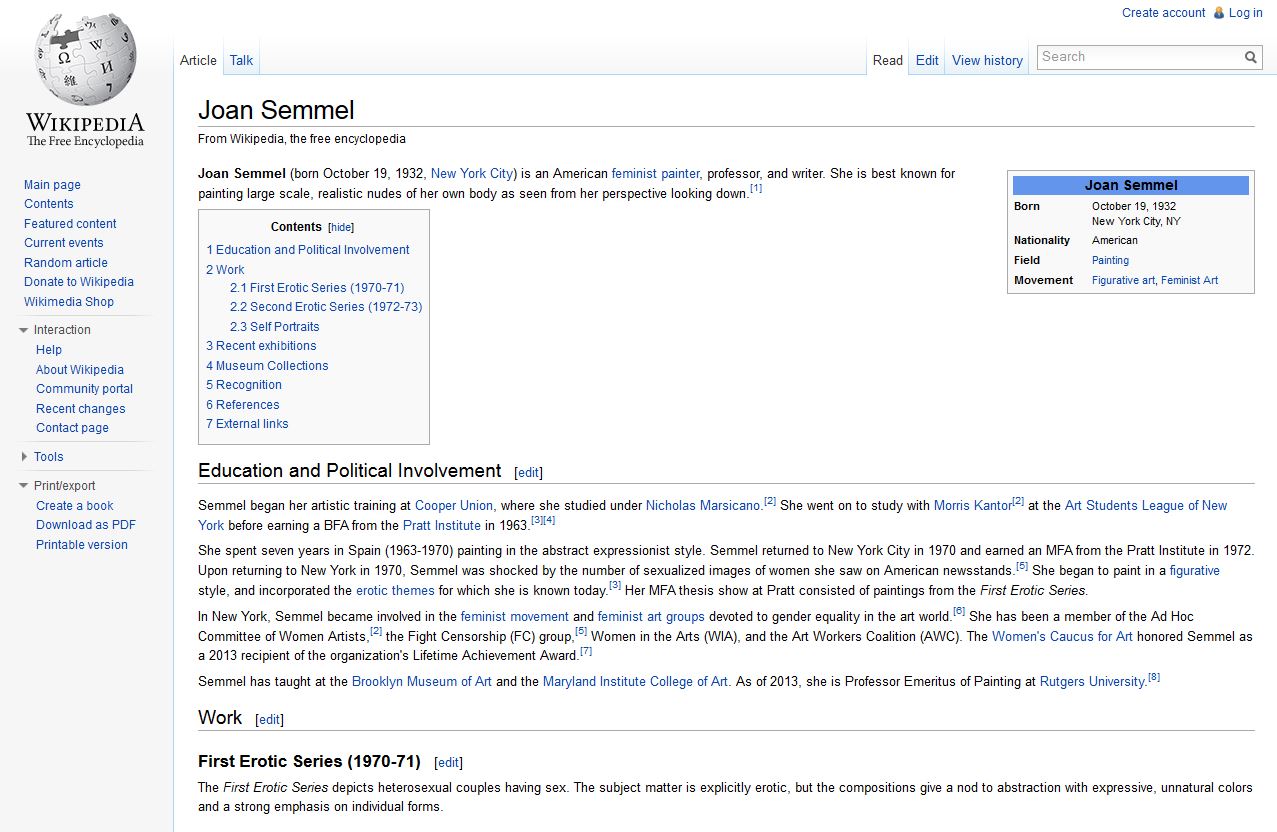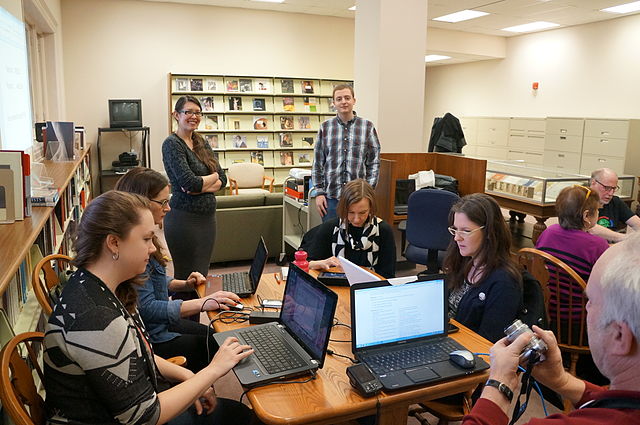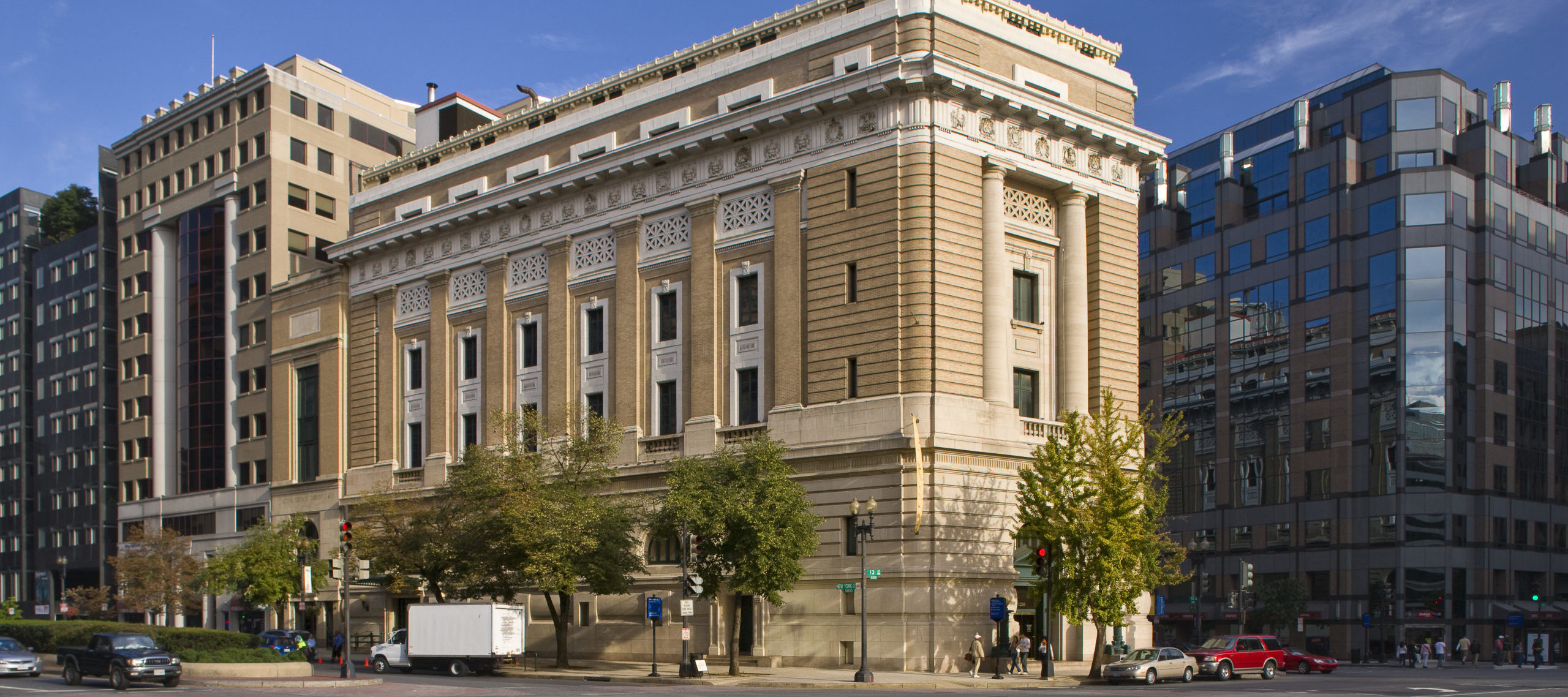The internet has become one of the most readily used resources for answers to myriad questions. A quick Google keyword search will often land a Wikipedia link for inquiring minds to find out more. In fact, let’s do a quick experiment. Pull up another window of your browser of choice. Visit Google and type in “Joan Semmel”—a notable feminist artist who works primarily with erotic self-portraits. After her artist site and gallery, one of the top links is her Wikipedia page. However, just more than a month ago that page did not exist. It was created here, at NMWA, with NMWA resources and by volunteers with a strong desire to ensure that as digital history is (re)written it includes women’s contributions.

“Wikipedia is often the first stop for people doing any research on the web, so it’s extremely important to have good articles written with reliable materials from our museum’s library to ensure these artists are included in this international digital encyclopedia,” said Heather Slania, director of the Betty Boyd Dettre Library and Research Center at NMWA. “Many of the women artists featured on Wikipedia have incomplete or unverified articles. For those without articles at all, like Semmel, it is about creating and increasing an online presence for their work and contributions in a history that has conveniently left them out.”
Semmel’s Wikipedia page was one of 101 articles created for women artists at last month’s Art + Feminism Wikipedia Edit-a-thon. NMWA was one of 31 venues in six countries participating in this global initiative dedicated to creating a more gender-balanced Wikipedia. In all, nearly 20 individuals attended the edit-a-thon at NMWA, creating 10 new articles and expanding upon an additional 11 articles.
“Part of our mission at the library is to facilitate knowledge creation about the history and achievements of women artists worldwide. These significant contributions to Wikipedia’s postings help fulfill those goals while also furthering knowledge about women artists,” Slania said.

The gender bias in Wikipedia’s male-dominated articles and editors has been acknowledged after several studies, and recent articles suggest that 90 percent of the website’s editors are male. As more people turn to Wikipedia for information, these edit-a-thons help shrink the gender gap, but there are still issues to be addressed.
As Slania notes, “Part of the problem with Wikipedia relates to notability. Posts on individuals require a certain level of celebrity, which a good deal of women artists have traditionally been denied. Women were excluded from art shows and text books and their achievements were not recorded. How do you include someone who has been excluded?”
The next Wikipedia Edit-a-thon at NMWA will be on March 30, 2014. Interested participants should register in advance, and editors at all levels of expertise are encouraged to participate—from first-time Wikipedia editors to published art historians. Visit our website for more information. Or, just Google us.

